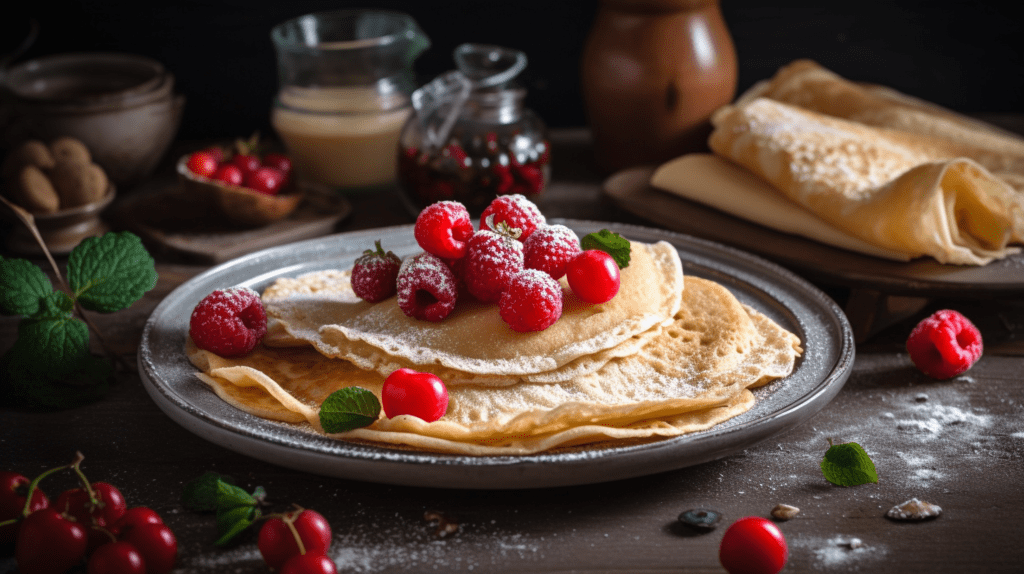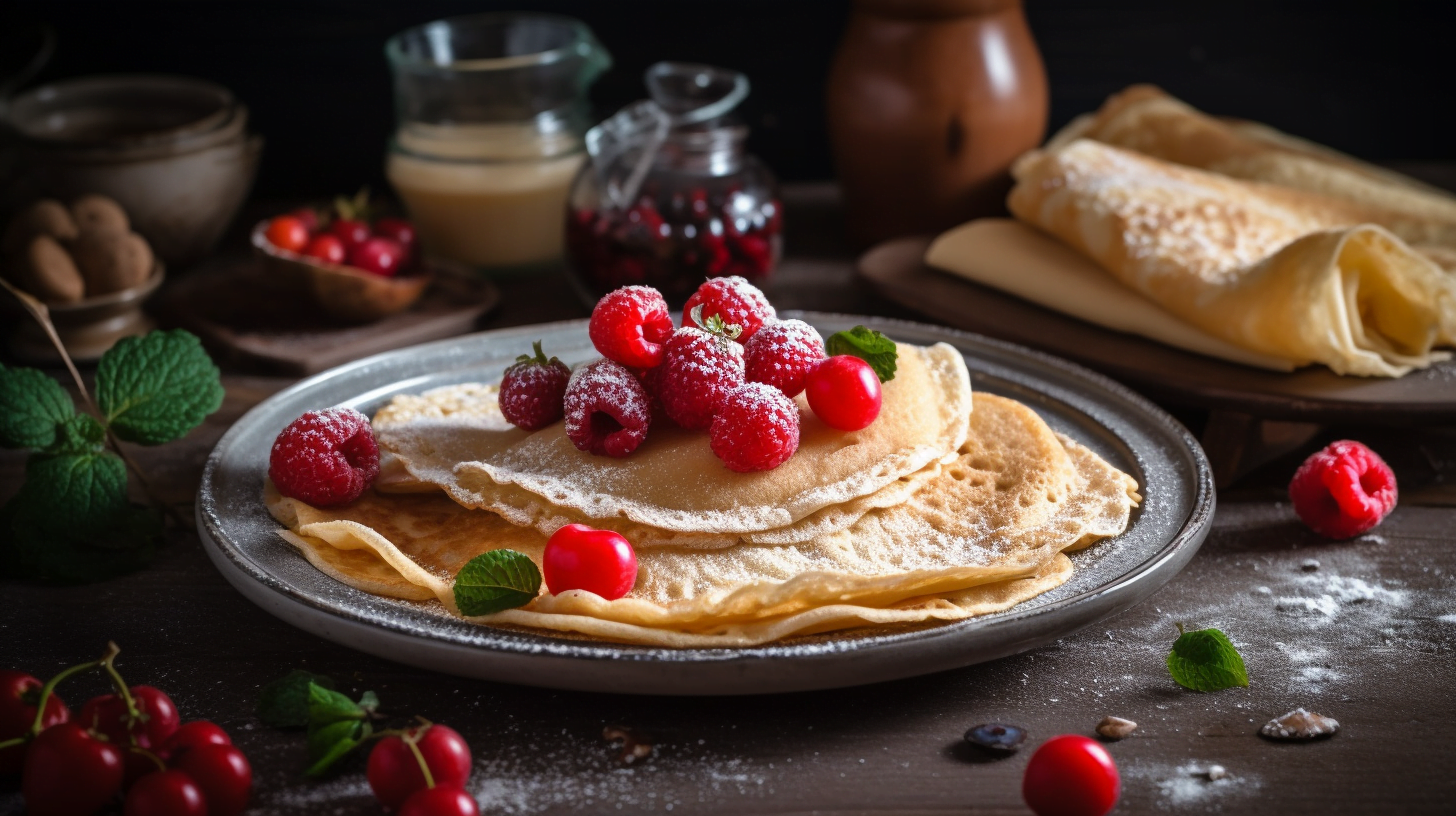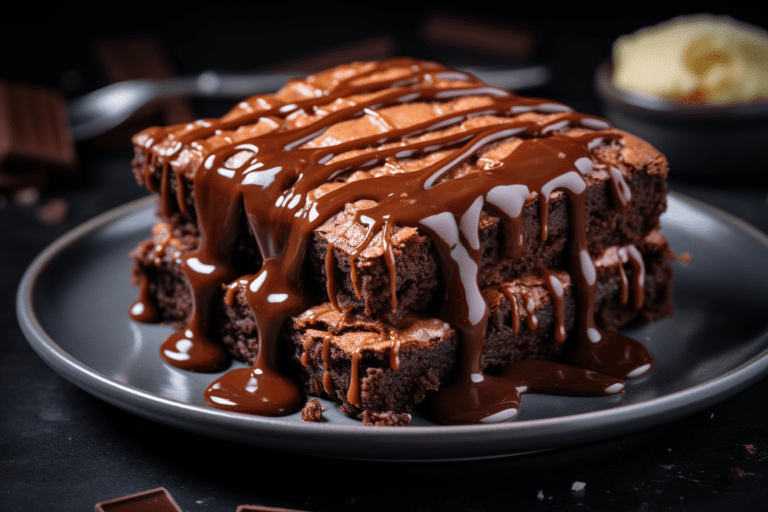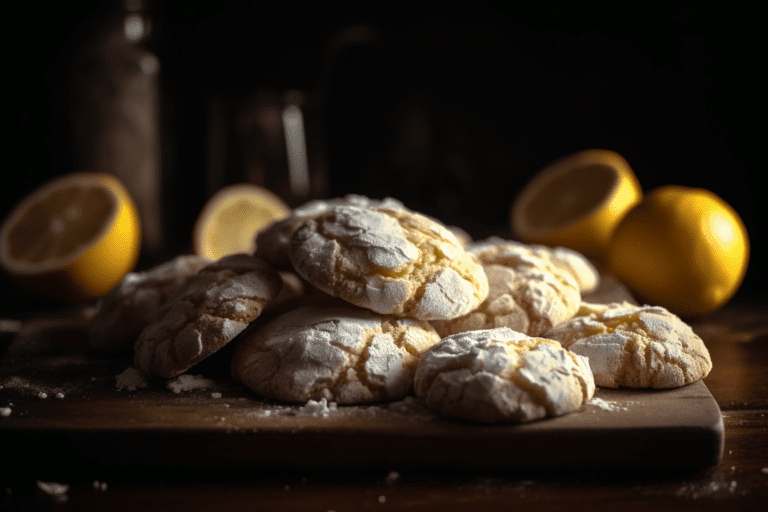Tantalizingly Delicious Crepe Recipe to Try Today
Are you looking for a delicious and versatile dish to add to your crepe recipe collection? Look no further than crepes! These thin and delicate pancakes can be filled with sweet or savory ingredients and make for a satisfying breakfast, lunch, or dessert.
In this article, we’ll share the history of crepes, essential ingredients for perfect crepes, tips for preparing the batter, and cooking techniques to ensure a flawless final product.
The History of Crepes
Crepe-lovers around the world can thank the French for this delicacy that has been enjoyed for centuries. The word “crepe” comes from the Latin word “crispus,” meaning crisp. Crepes were first introduced in Brittany, a region in the Northwest of France, and were traditionally served with bacon, eggs, and cheese. Over time, crepes have become more popular, and today they can be found in restaurants all around the world.
Origin of Crepes
The origins of crepes can be traced back to ancient Rome. At that time, chefs would make a dish called “alita dolcia,” which was a thin pancake filled with honey, pepper, and cheese. The dish was a favorite among Roman soldiers, who would eat it before going into battle. The recipe then spread throughout Europe and evolved into what we now know as crepes.
In the Middle Ages, crepes were a popular dish among the French aristocracy. They were often served with sweet or savory fillings and were considered a luxury food. In fact, crepes were so popular that they even played a role in French politics. In 1445, the Duchess Anne of Brittany offered crepes to the peasants as a symbol of her commitment to their well-being. This gesture helped to improve her reputation among the people and solidified her position as a beloved ruler.
Crepes Around the World
While crepes are most commonly associated with France, they can be found in many other countries as well. In Italy, they are known as “crespelle,” and are often served with ricotta cheese and spinach. In Poland, they are called “naleśniki,” and are typically served with sweet fillings such as jam or fruit. In Japan, crepes are a popular street food and are filled with fruits, whipped cream, and ice cream.
Today, crepes are enjoyed by people all around the world. They can be served as a sweet or savory dish, and are often filled with a variety of ingredients such as Nutella, bananas, ham, and cheese. Whether you are enjoying a traditional French crepe or a modern twist on the classic dish, there is no denying the deliciousness of this beloved food.


Essential Ingredients for Perfect Crepes
To make perfect crepes, there are a few key ingredients that you’ll need. However, it’s not just about having the right ingredients, but also about using them in the right way. Here are some tips to help you make the best crepes possible.
Choosing the Right Flour
The flour is the main ingredient in crepes, so it’s essential to choose the right type. All-purpose flour works well for crepes, but for a lighter, more delicate texture, you can use cake flour or pastry flour. It’s important to sift the flour before using it to remove any lumps and ensure a smooth batter.
Another tip is to let the batter rest for at least 30 minutes before cooking the crepes. This allows the flour to absorb the liquid and results in a smoother batter.
The Importance of Fresh Eggs
Eggs serve as a binding agent in the crepe batter, so it’s important to use fresh eggs for the best results. You can always tell if an egg is fresh by checking the sell-by date or by placing it in a bowl of water. If it sinks to the bottom, it’s fresh; if it floats to the top, it’s old and should be discarded.
Another tip is to use room temperature eggs. This helps the ingredients mix together more easily and results in a smoother batter.
Selecting the Best Milk and Water Ratio
A combination of milk and water is needed to make the perfect crepe batter. The ratio of milk to water varies depending on the recipe, but a good rule of thumb is to use equal parts of each. For a richer flavor, you can use cream or half-and-half instead of milk.
It’s important to use cold milk and water when making the batter. This helps prevent the batter from becoming too thin and ensures a consistent texture.
Finally, be sure to whisk the batter thoroughly to incorporate all the ingredients. This helps ensure that the crepes cook evenly and have a uniform texture.
Preparing the Crepe Batter
Now that you have your ingredients, it’s time to prepare the crepe batter. Crepes are a classic French dish that can be enjoyed for breakfast, brunch, or dessert. They are thin, delicate pancakes that can be filled with a variety of sweet or savory ingredients.
Mixing the Ingredients
Start by mixing together the flour, eggs, milk, water, and a pinch of salt in a large bowl. Crepe batter is relatively simple to make, but it’s important to use the right proportions of ingredients to achieve the perfect consistency. Use a whisk or a blender to incorporate the ingredients until the batter is smooth and free of lumps. You can also add a tablespoon of sugar or vanilla extract for a sweeter batter.
Resting the Batter for Optimal Consistency
Once the batter is mixed, it’s important to let it rest for at least 30 minutes before cooking. This step is crucial to achieving the optimal consistency for your crepes. Resting the batter allows the gluten in the flour to relax, resulting in a smoother and more consistent batter. If you’re short on time, you can let the batter rest for as little as 10 minutes, but the longer you can let it rest, the better.
During this time, you can prepare your fillings and toppings. Some popular crepe fillings include Nutella and banana, ham and cheese, or strawberries and whipped cream. You can also prepare a variety of sauces to drizzle over your crepes, such as chocolate sauce, caramel sauce, or raspberry coulis.
Tips for a Smooth and Lump-Free Batter
To avoid lumps in your batter, make sure your ingredients are at room temperature before mixing. This will help the ingredients blend together more easily. Whisk the batter frequently while it rests to prevent any lumps from forming. Don’t overmix the batter when you’re ready to cook, as this can result in tough and rubbery crepes.
When cooking your crepes, make sure your pan is hot and well-greased. Use a ladle or measuring cup to pour the batter into the pan, then swirl the pan to spread the batter evenly. Cook the crepe for about 30 seconds on each side, or until it is lightly browned. Use a spatula to flip the crepe over, then fill it with your desired toppings and fold it into a triangle or roll it up like a burrito.
With these tips and tricks, you’ll be able to make perfect crepes every time. Whether you’re enjoying them for breakfast, brunch, or dessert, crepes are a delicious and versatile dish that everyone will love.
Cooking the Crepes
Now that your batter is ready, it’s time to cook the crepes. Cooking crepes can be a little daunting at first, but with a little practice, you’ll be able to create perfectly cooked crepes every time.
Choosing the Right Pan
A non-stick or well-seasoned cast-iron skillet or crepe pan is ideal for cooking crepes. The pan should be heated over medium-high heat until hot, and then lightly greased with butter or oil. Be sure to use a pan that is the right size for your crepes. If the pan is too large, the batter will spread too thin and the crepes will be difficult to flip. If the pan is too small, the batter will be too thick and the crepes will be doughy.
Mastering the Perfect Temperature
The key to perfectly cooked crepes is getting the temperature just right. The pan should be hot enough to create a golden-brown crust on the crepe, but not so hot that it burns or sticks to the pan. To test the temperature, you can drop a small amount of batter into the pan. If it sizzles and starts to cook immediately, the pan is ready. If the batter sits in the pan without sizzling, the pan is not hot enough. If the batter sizzles and then starts to smoke, the pan is too hot.
It’s important to keep the temperature consistent throughout the cooking process. If the pan gets too hot, turn down the heat. If the pan cools down too much, turn up the heat. You may need to adjust the heat slightly between batches to keep the temperature consistent.
Flipping Techniques for Evenly Cooked Crepes
Flipping the crepes can be a little tricky, but with a little practice, you’ll be able to do it with ease. To flip the crepe, use a spatula to loosen the edges of the crepe from the pan. Then, use your fingers or another spatula to gently lift the crepe and flip it over. Be sure to flip the crepe quickly and confidently to avoid tearing or folding it.
Cook the crepe for an additional 30 seconds on the other side, and then slide it onto a plate. If you’re making a large batch of crepes, you can keep them warm in the oven at 200°F while you finish cooking the rest of the batter.
Now that you’ve mastered the art of making crepes, you can experiment with different fillings and toppings to create the perfect dish for any occasion. Whether you’re in the mood for sweet or savory, crepes are sure to please! Try filling your crepes with fresh fruit and whipped cream for a sweet breakfast treat, or with sautéed vegetables and cheese for a savory lunch or dinner.
Don´t forget to check the article about Bento Cakes!
I hope you liked it and don´t forget to mention me on Instagram!
See you s2




